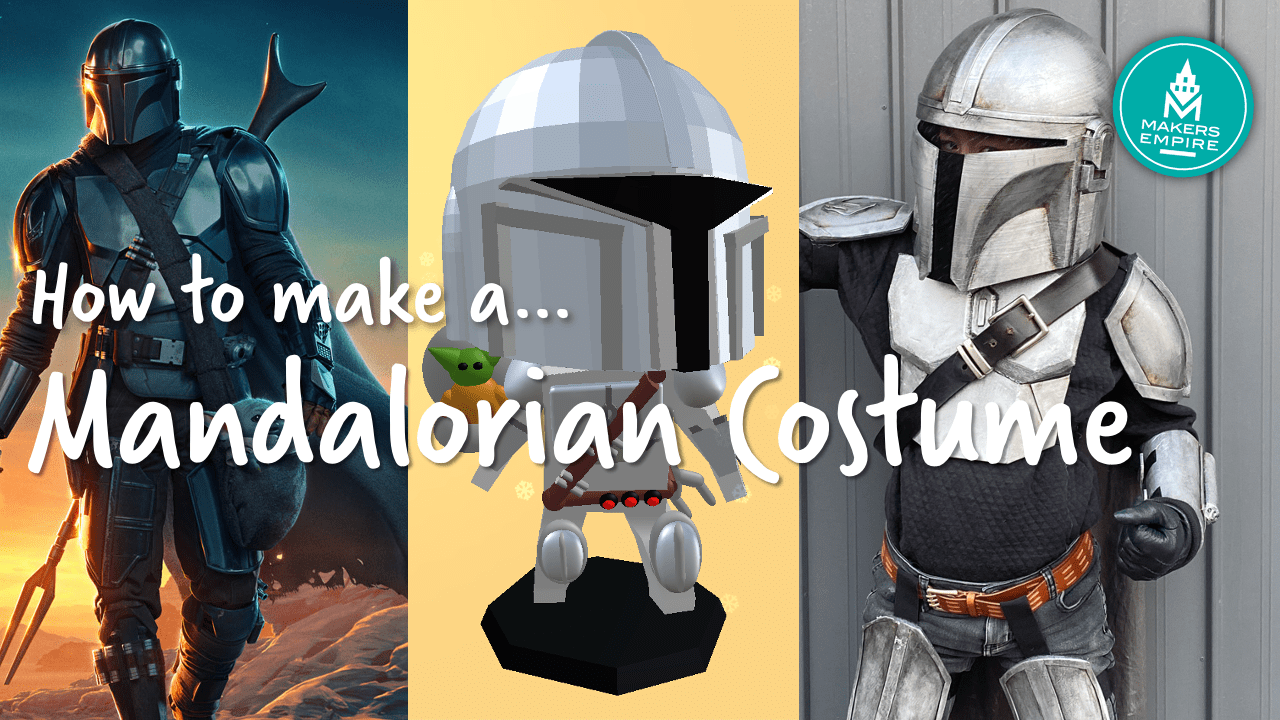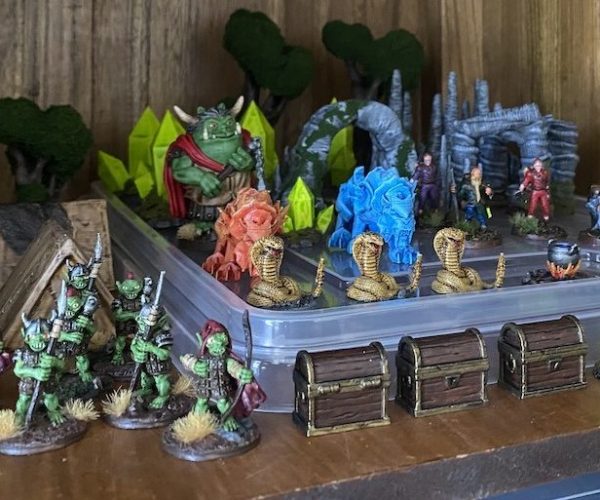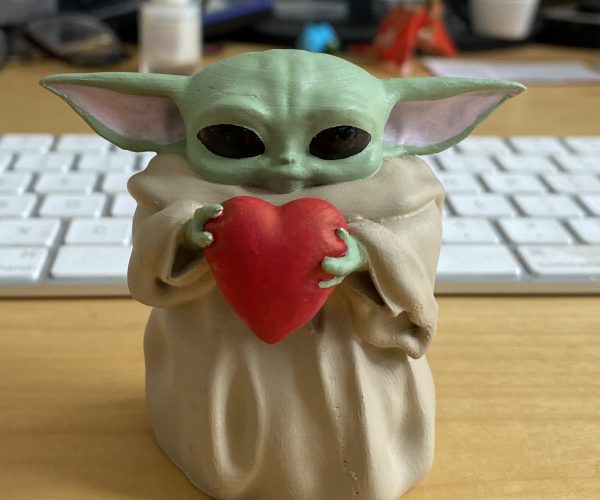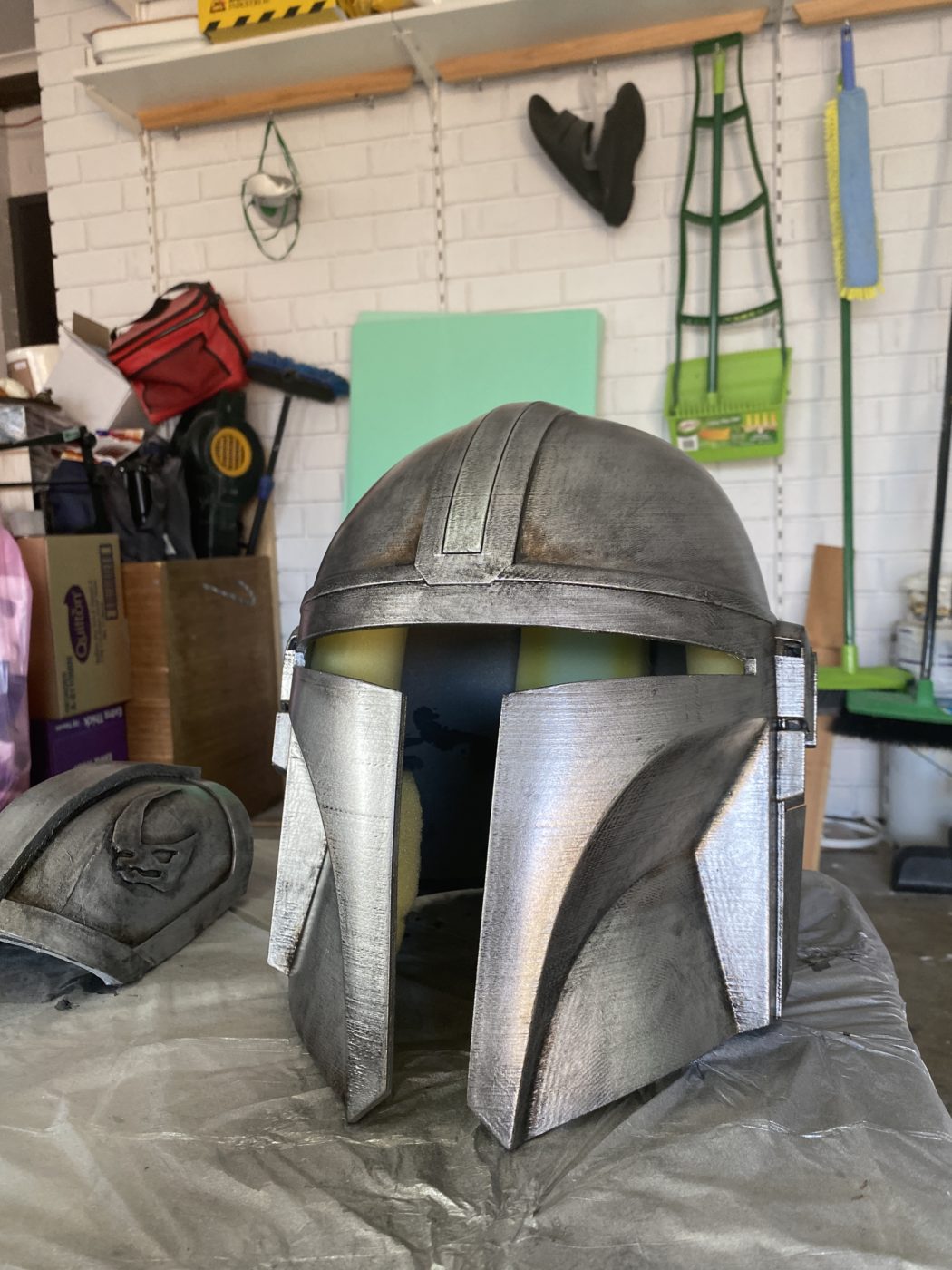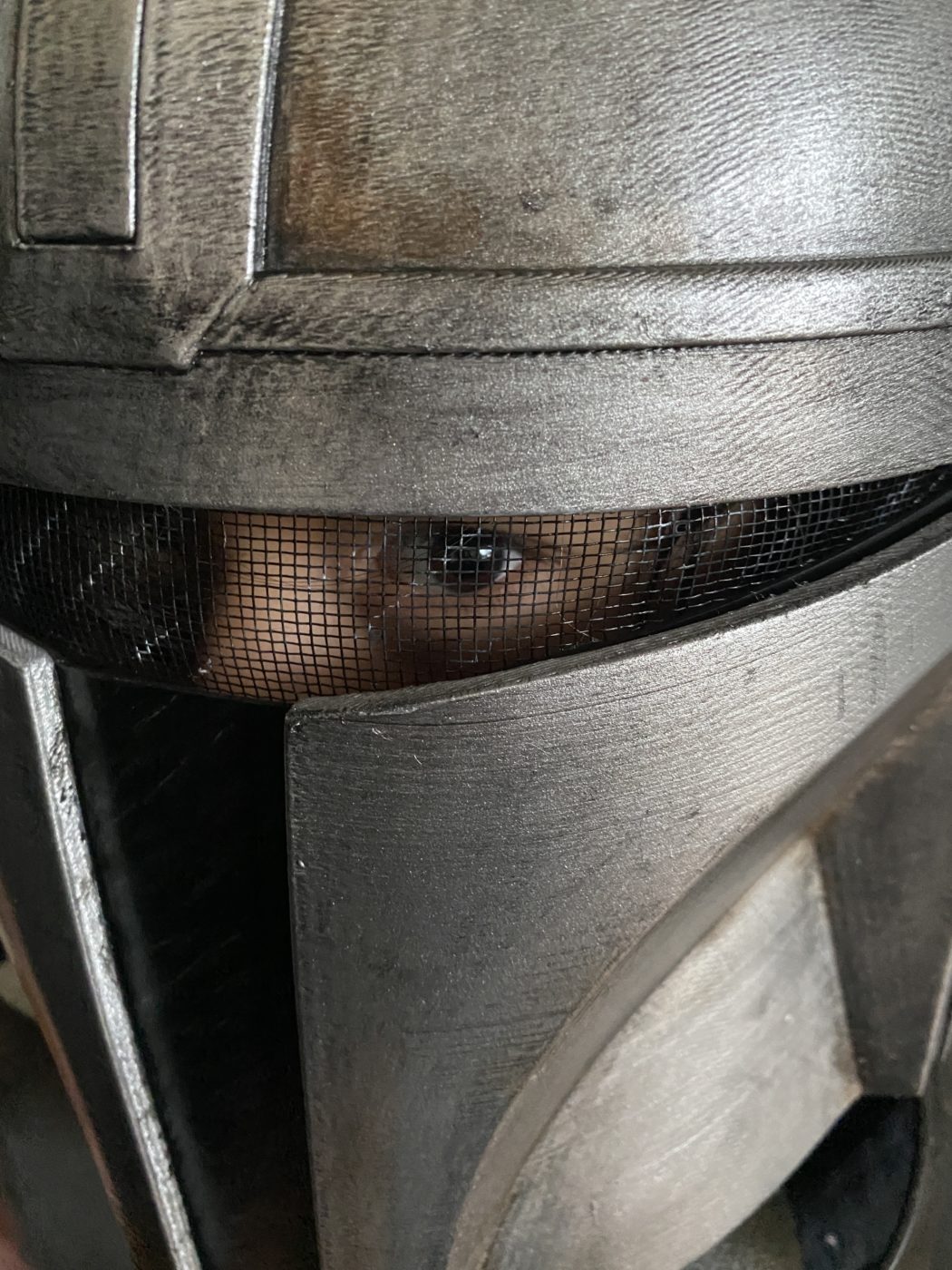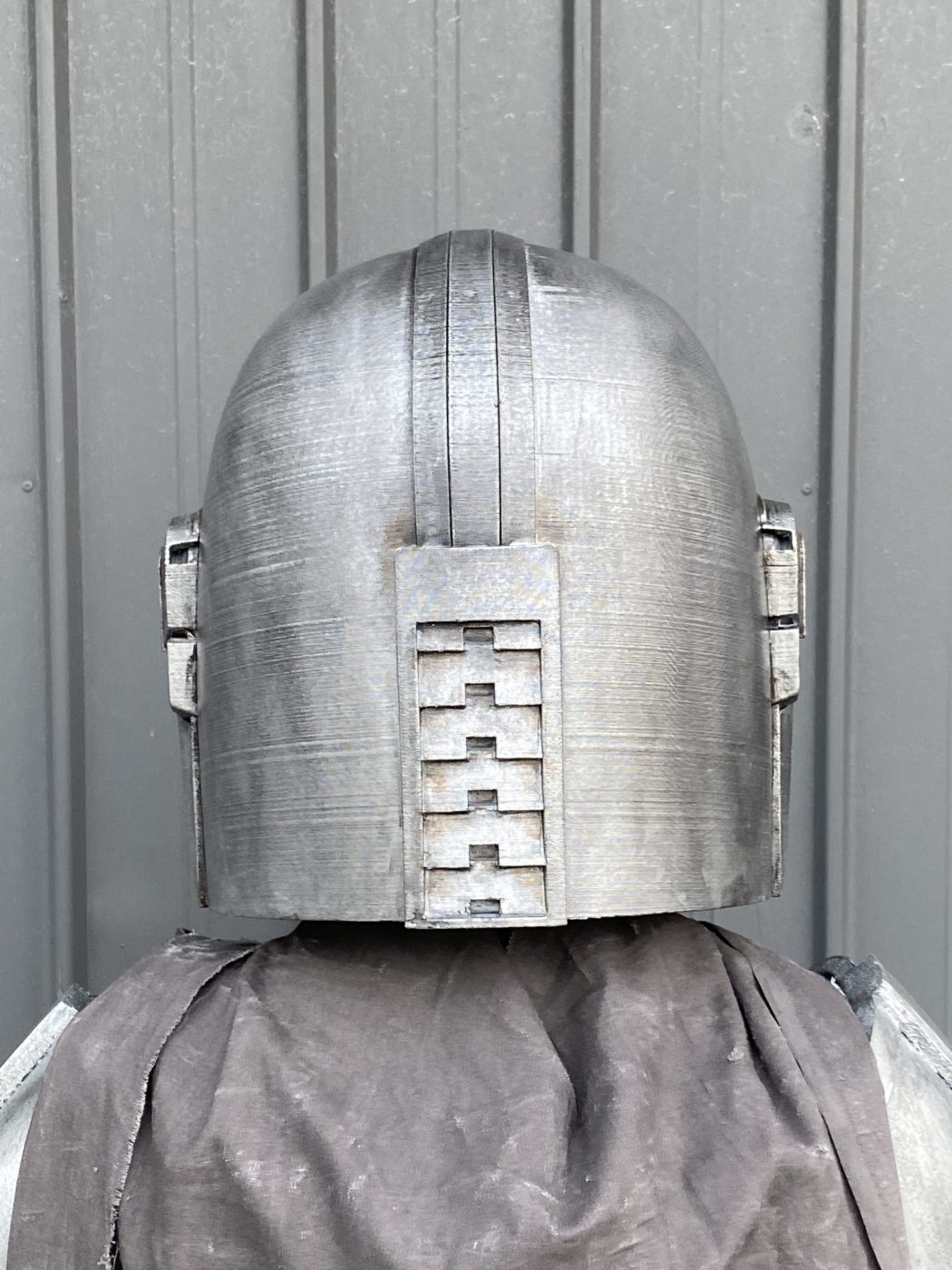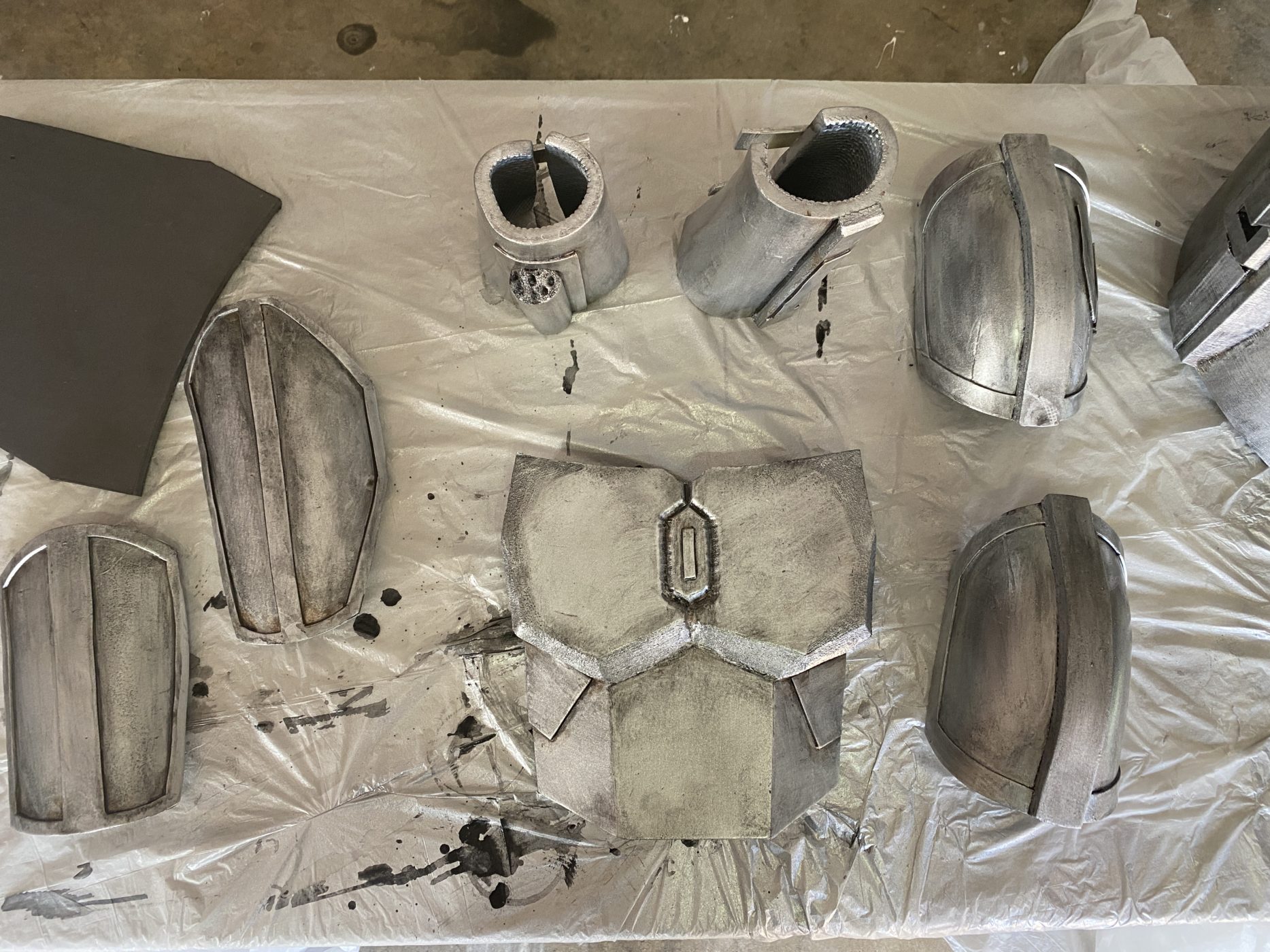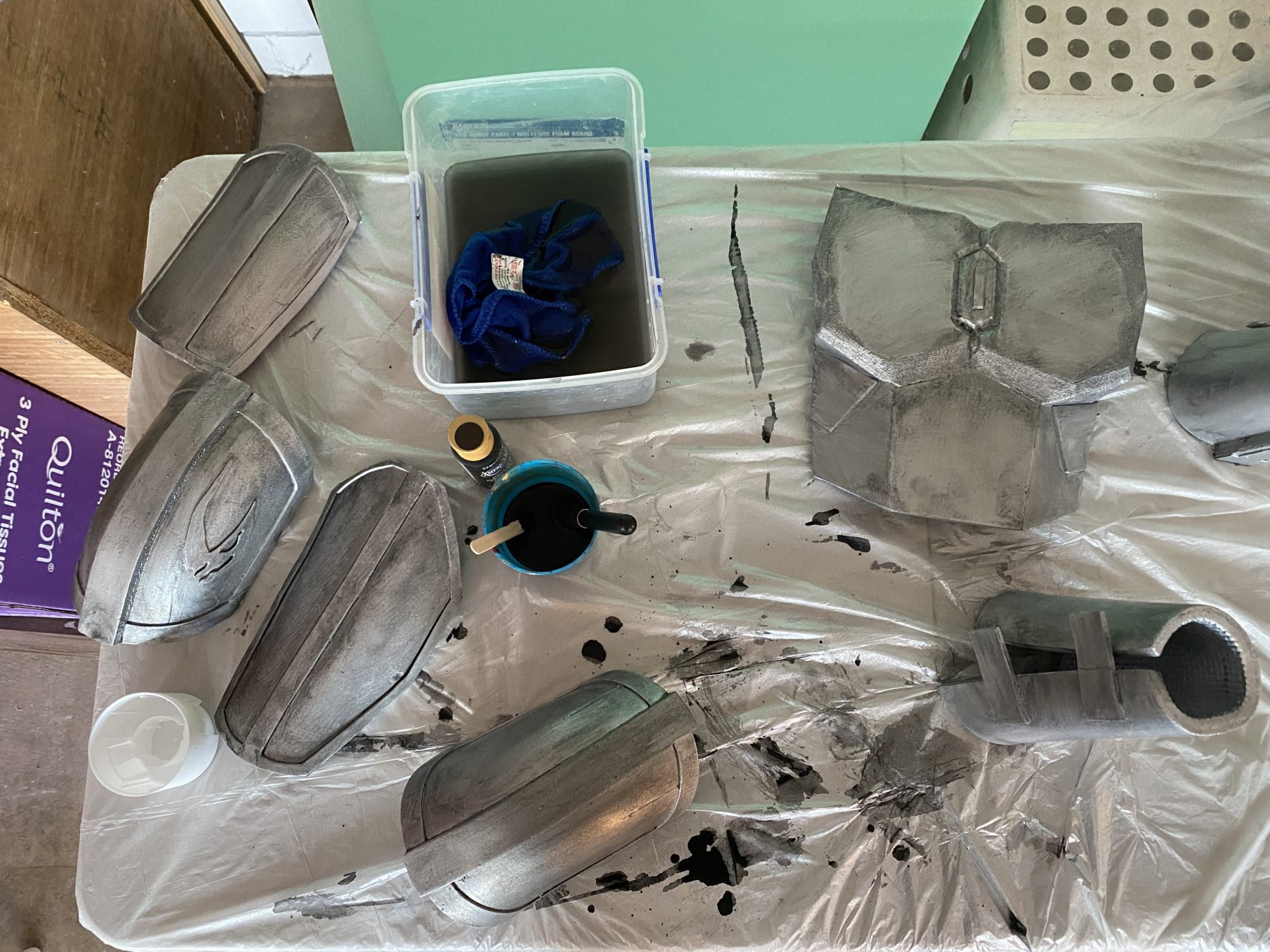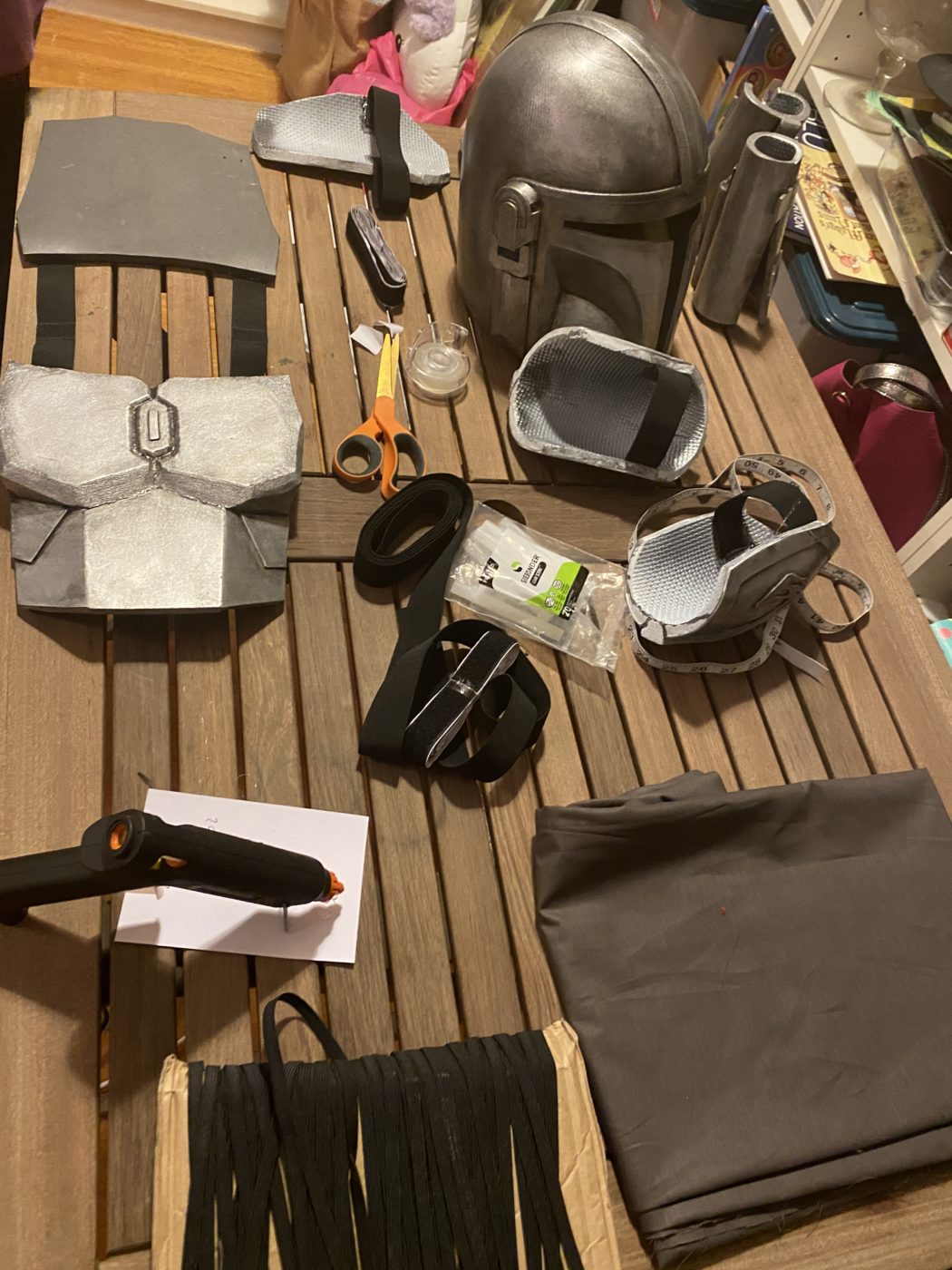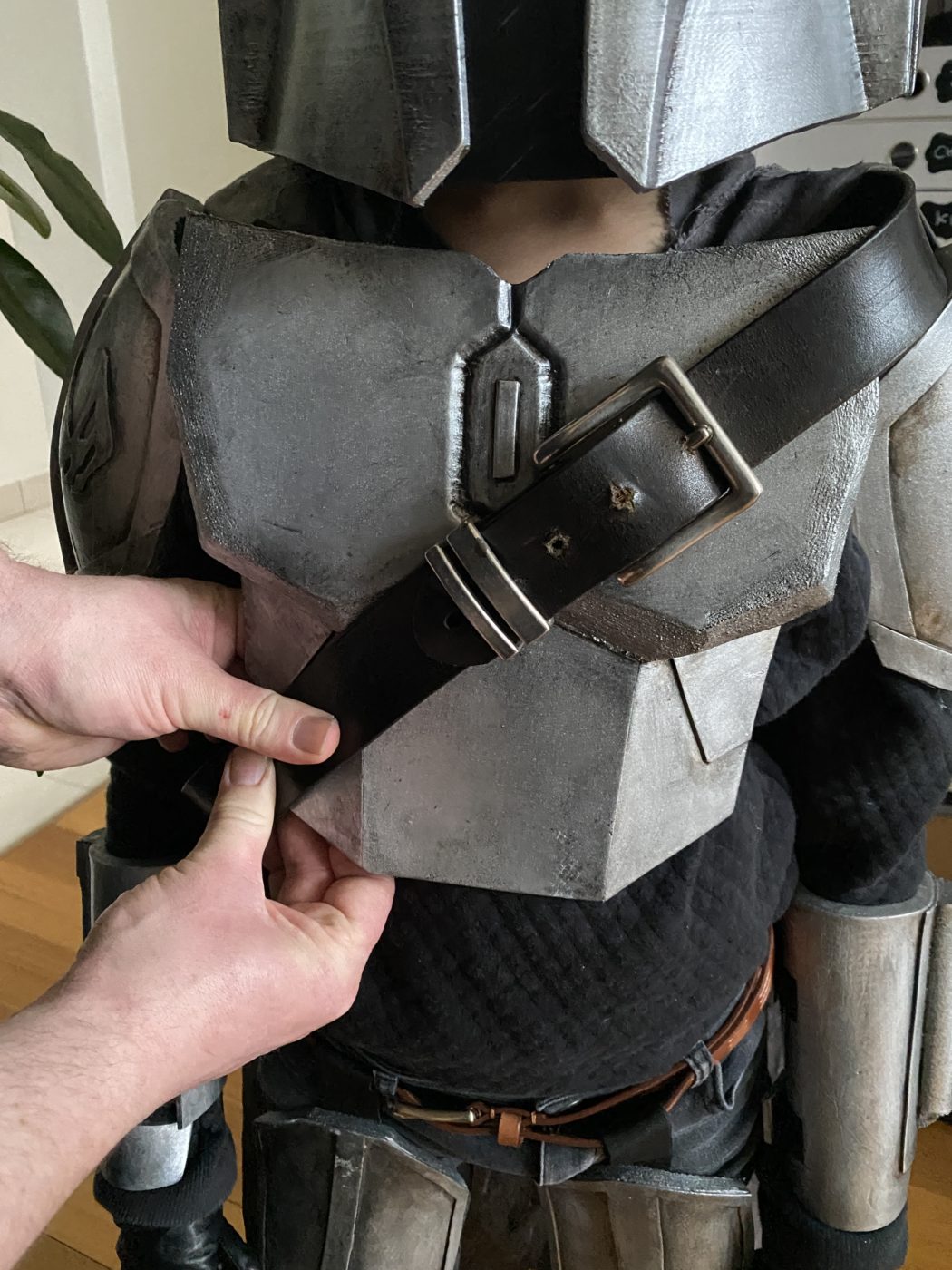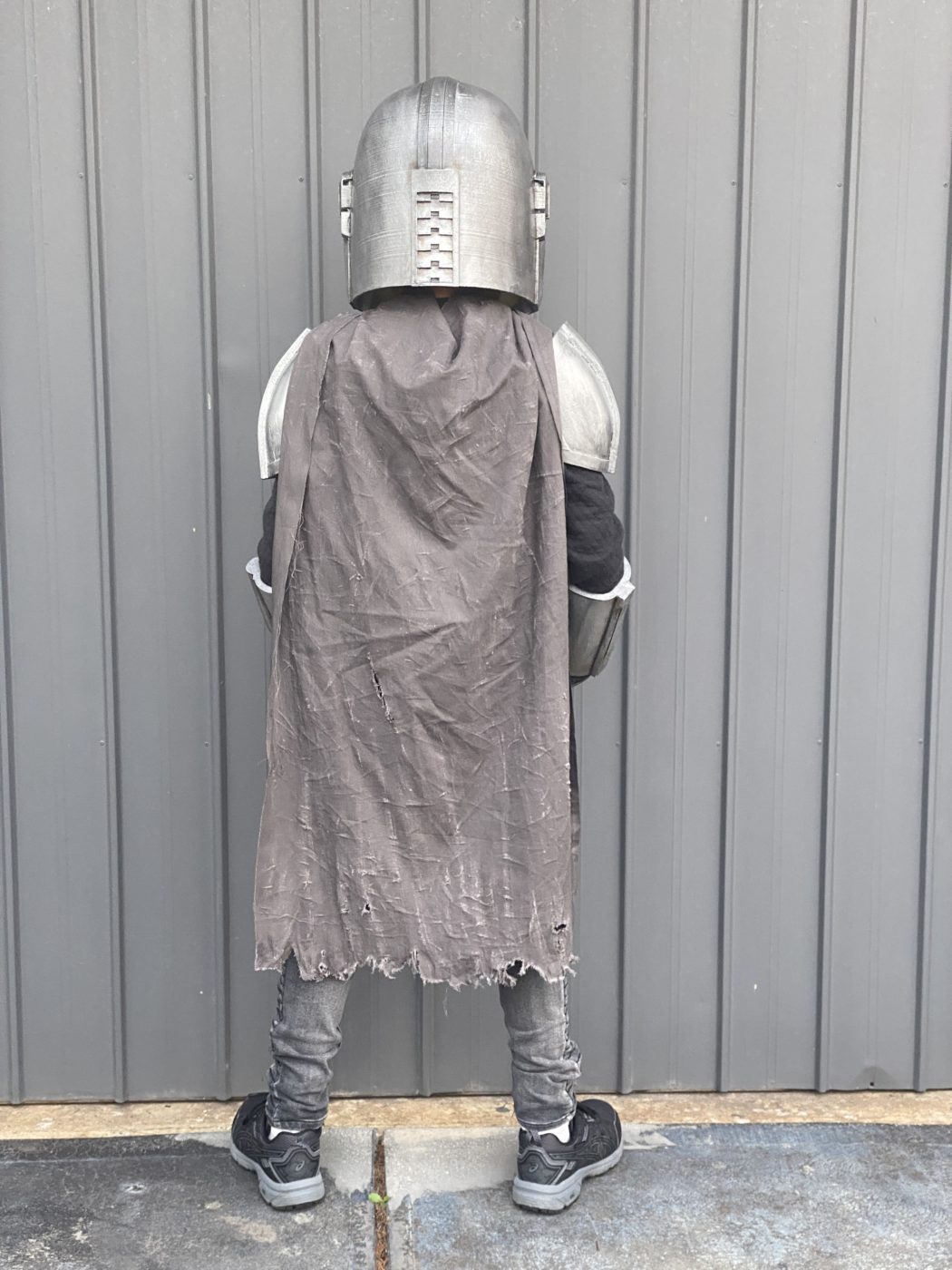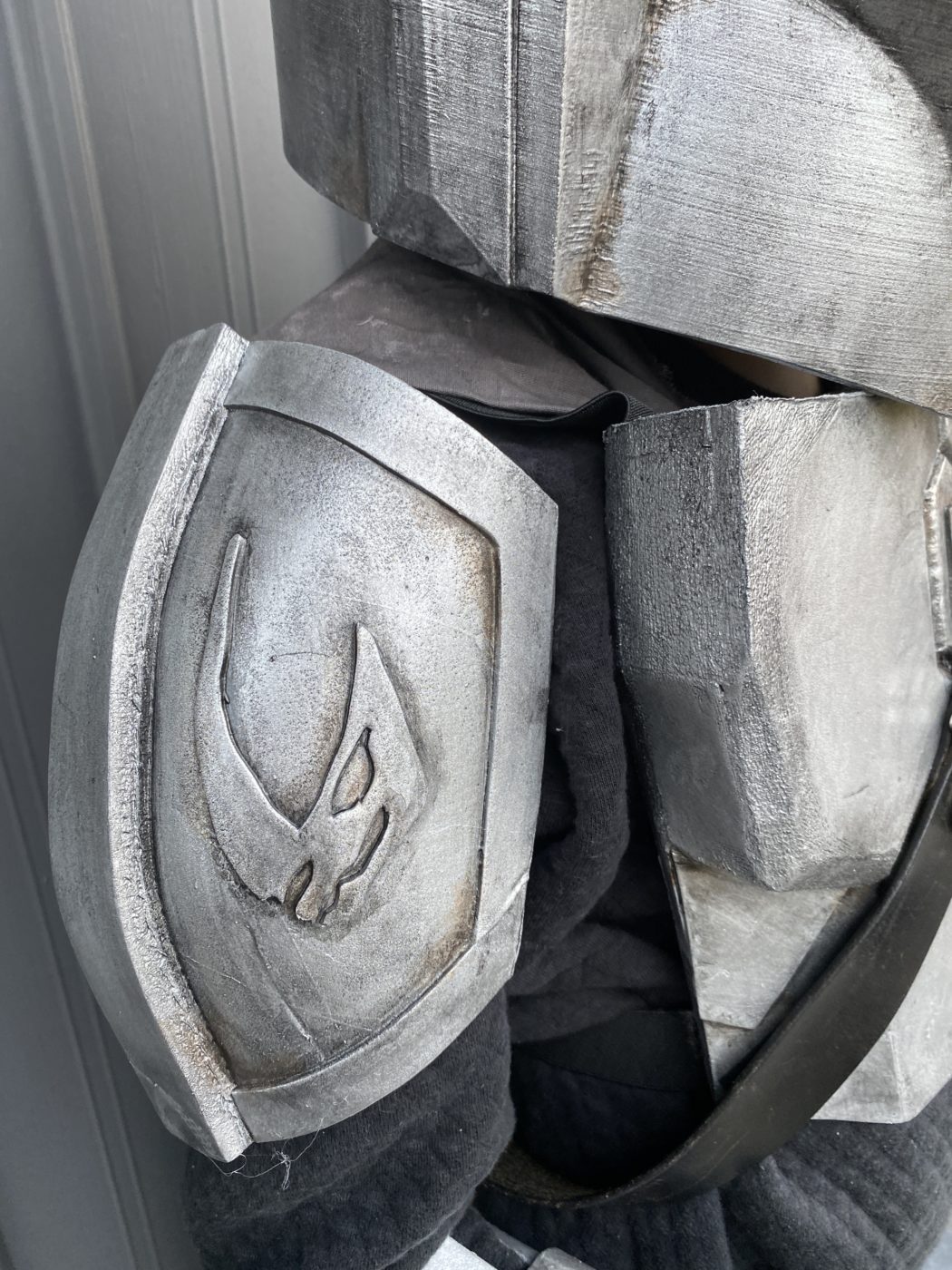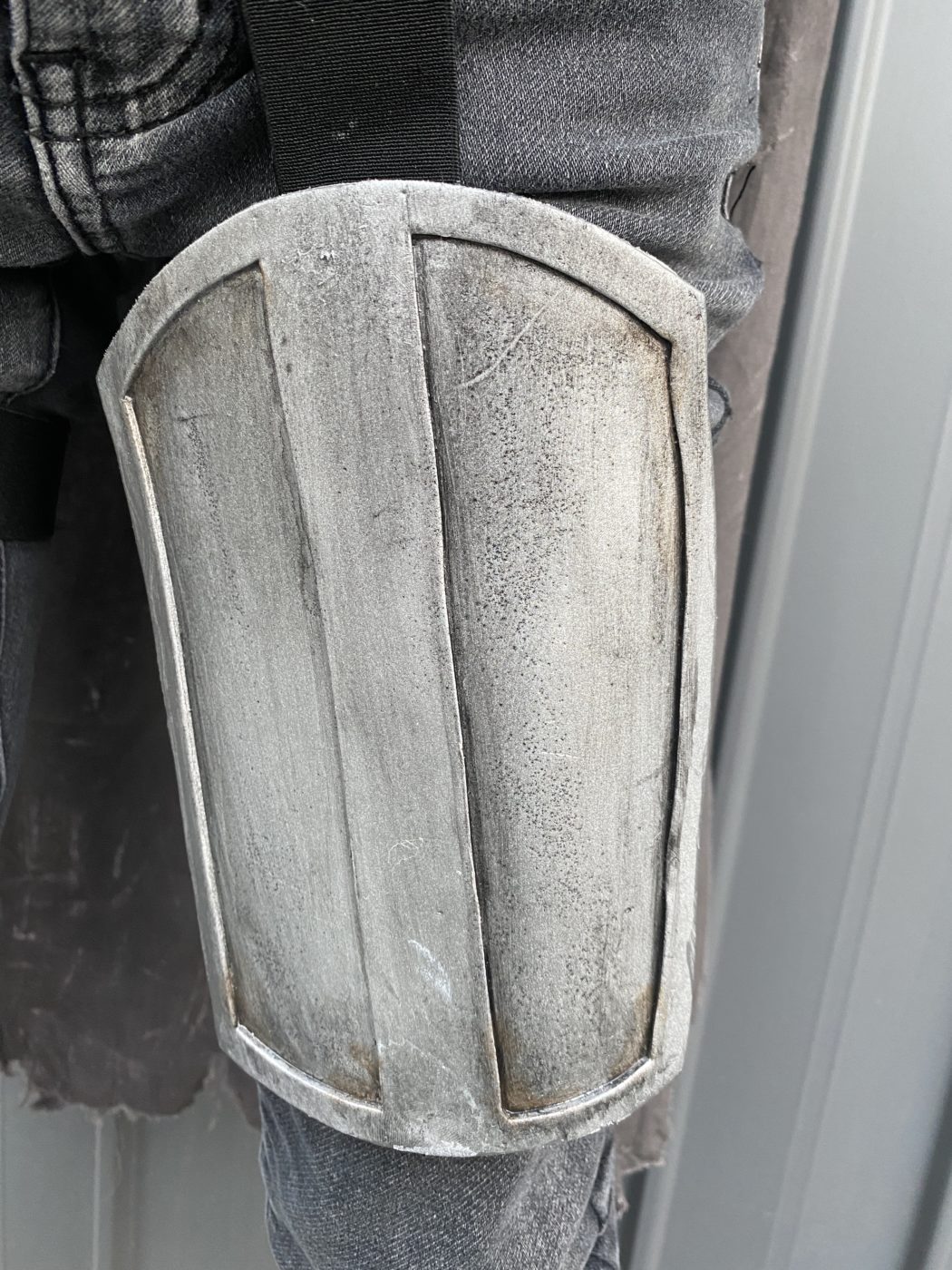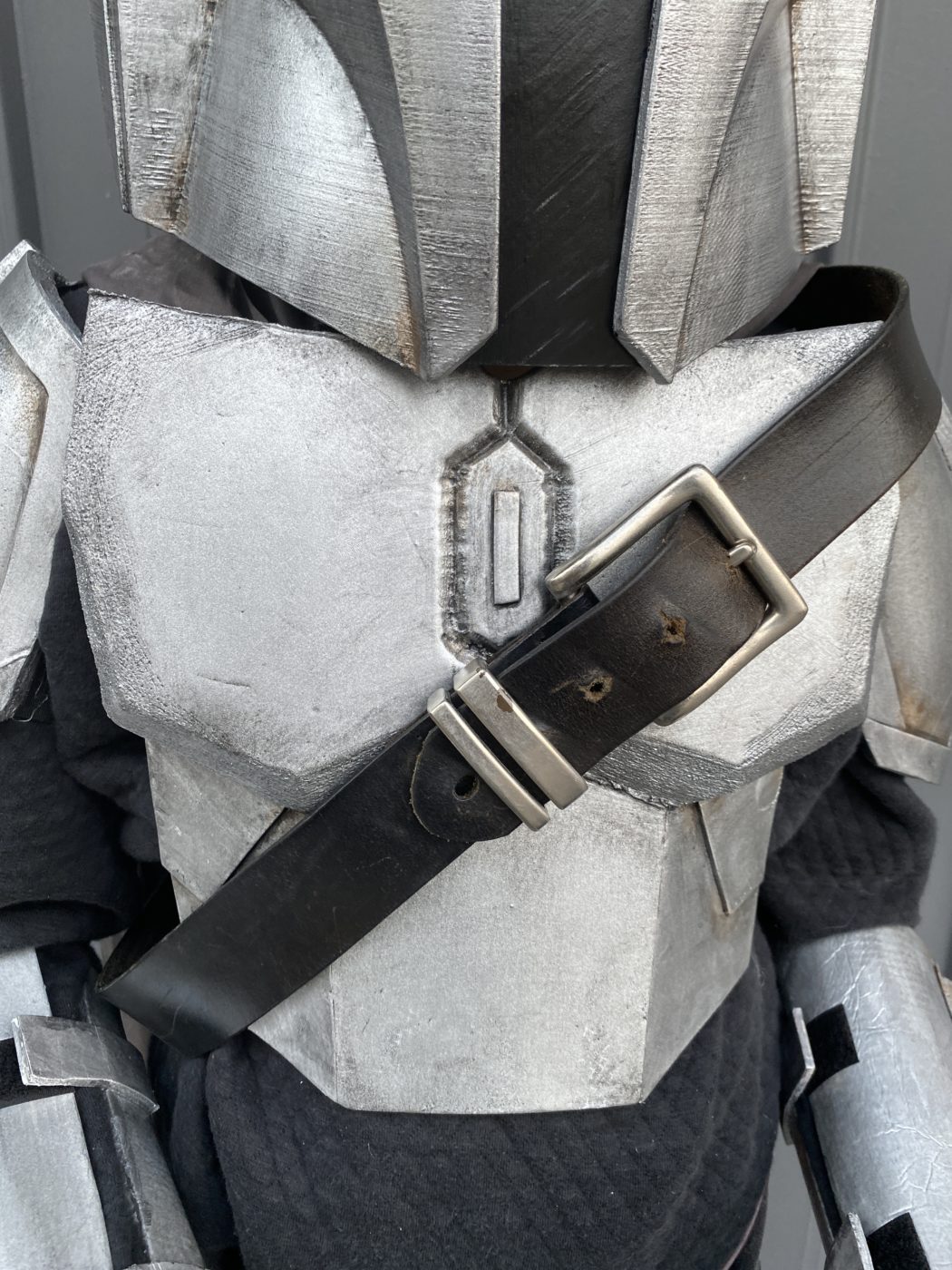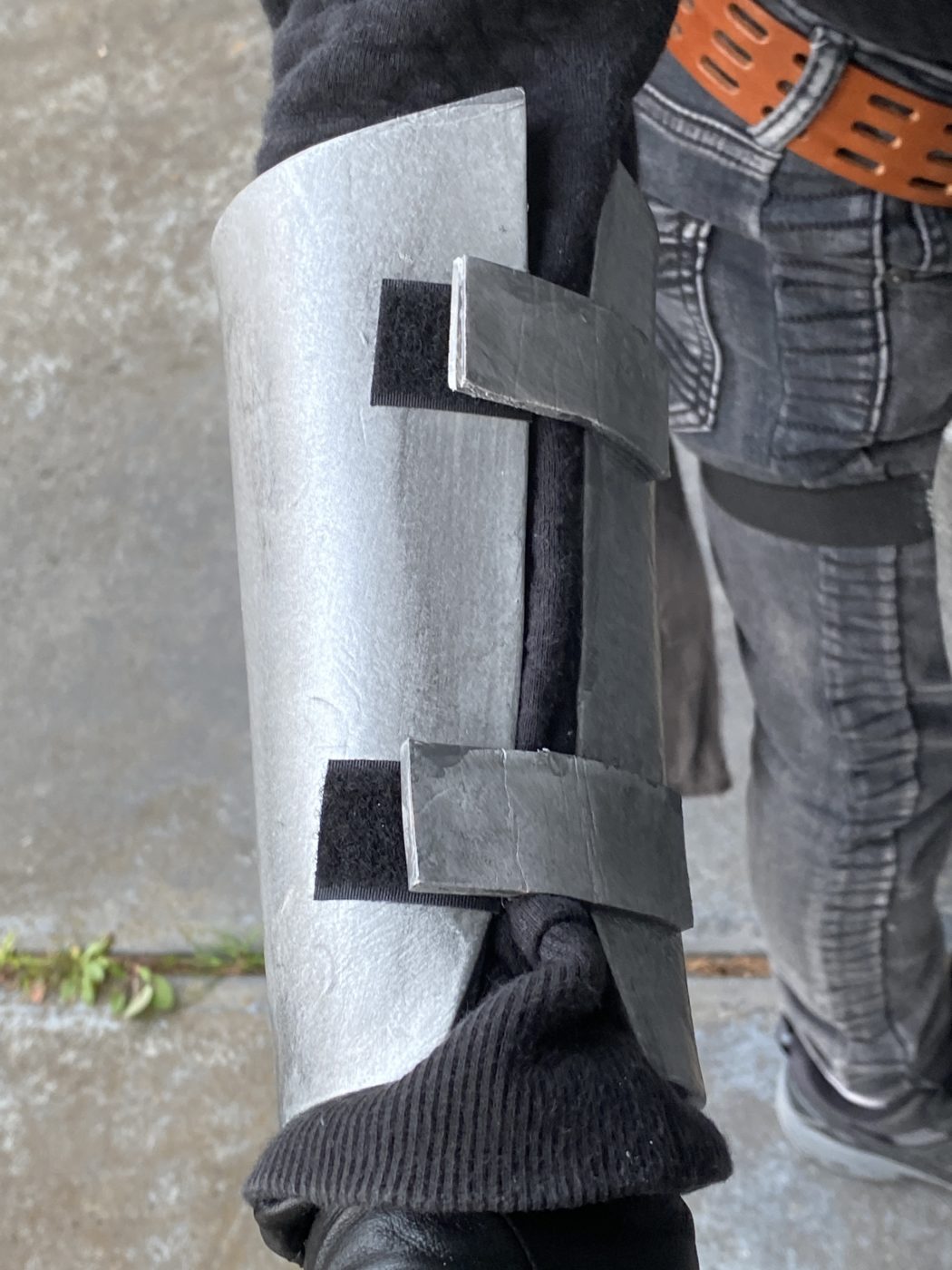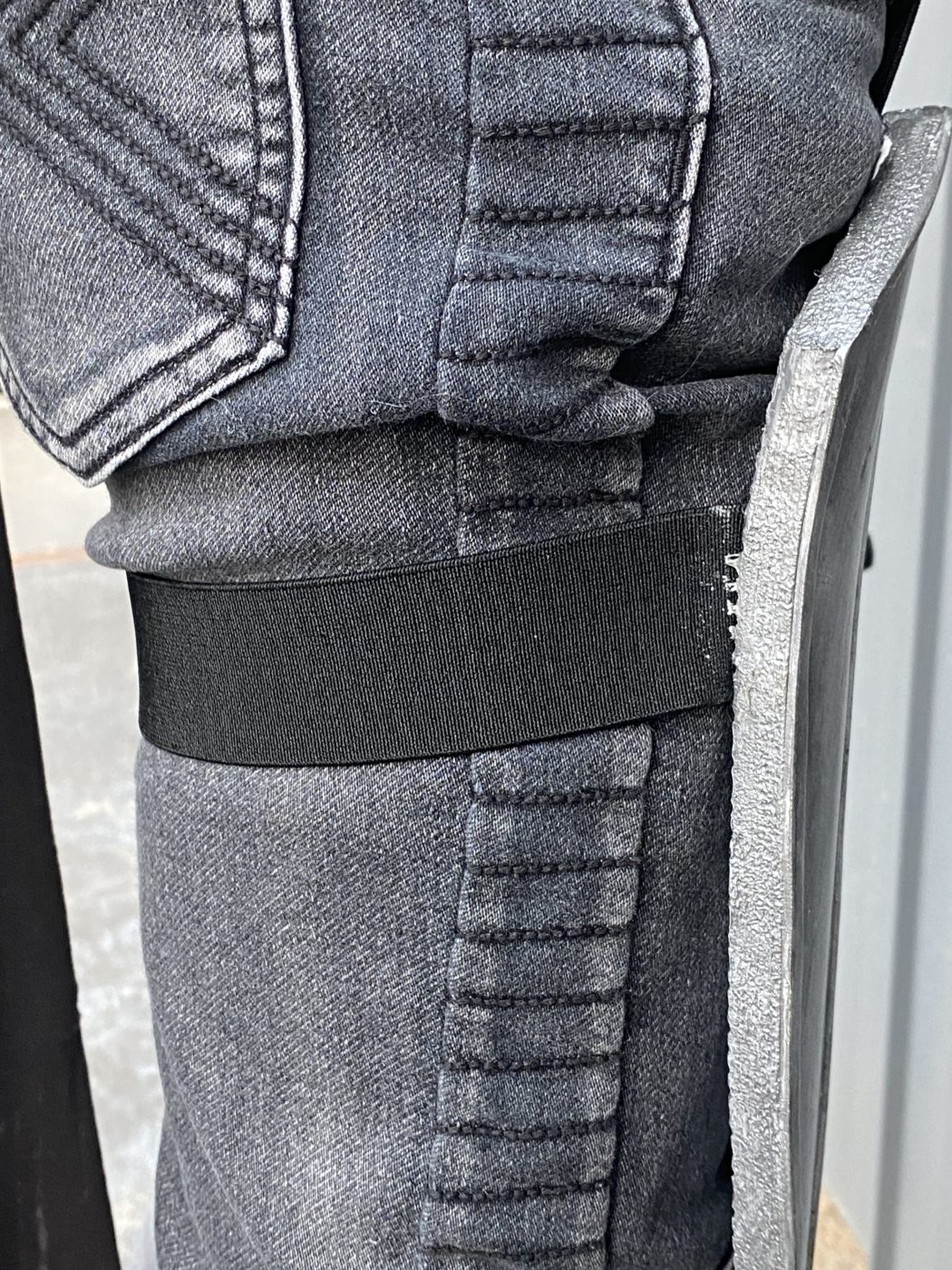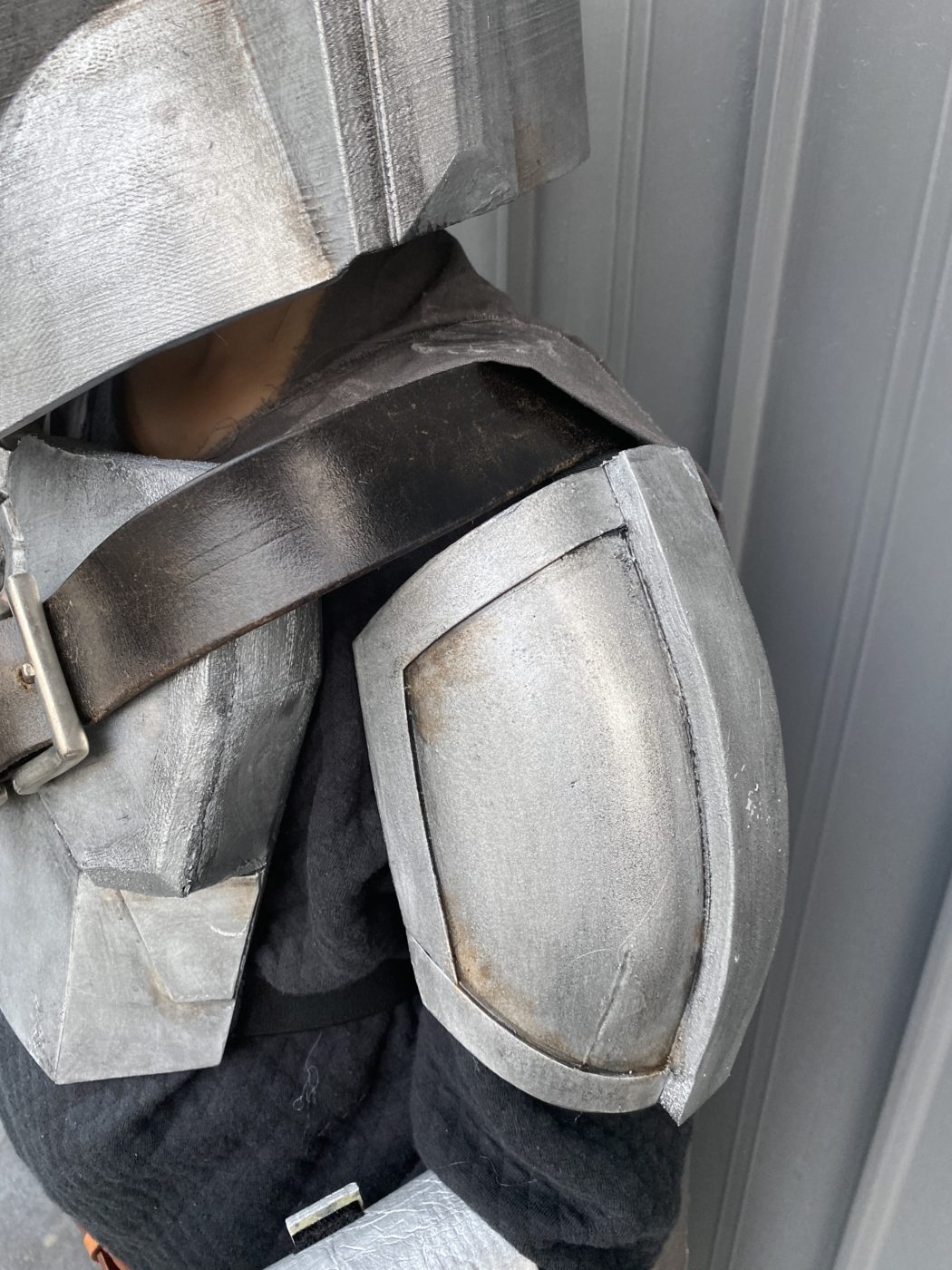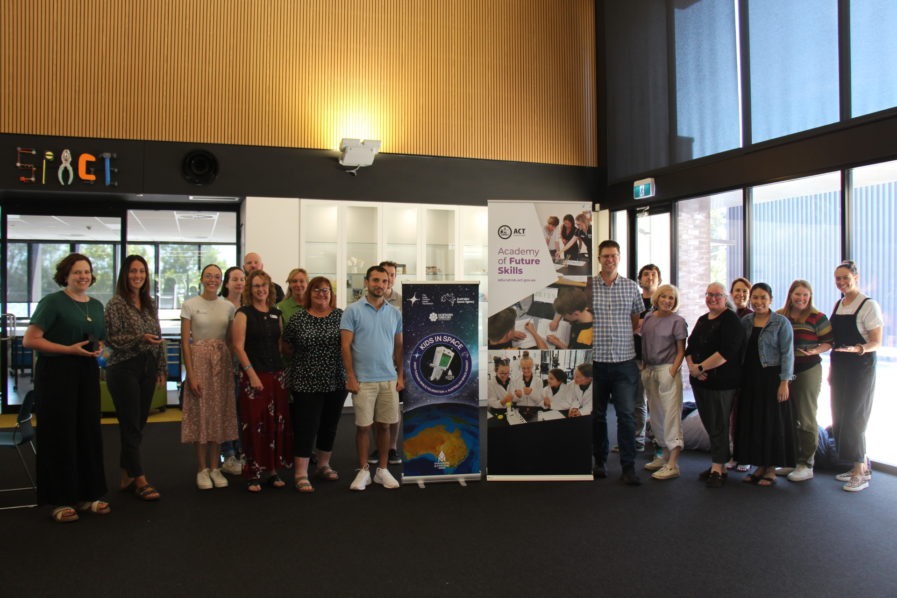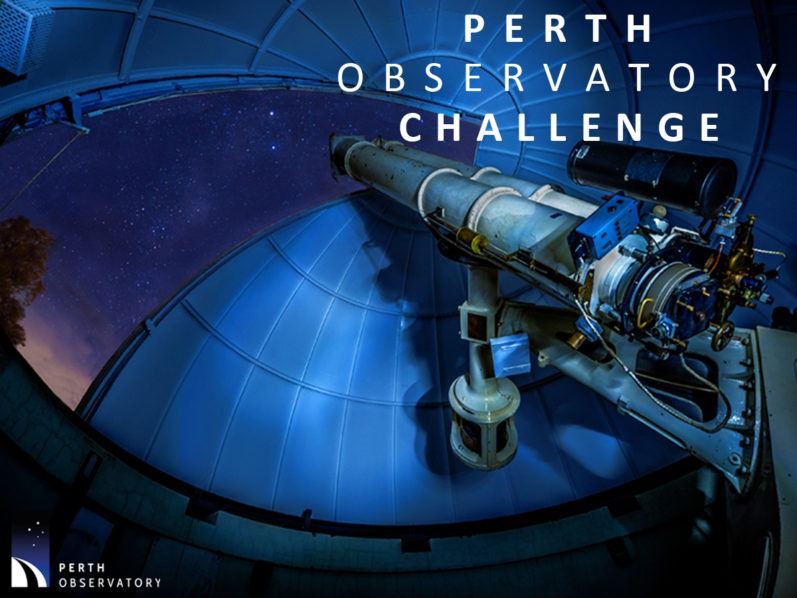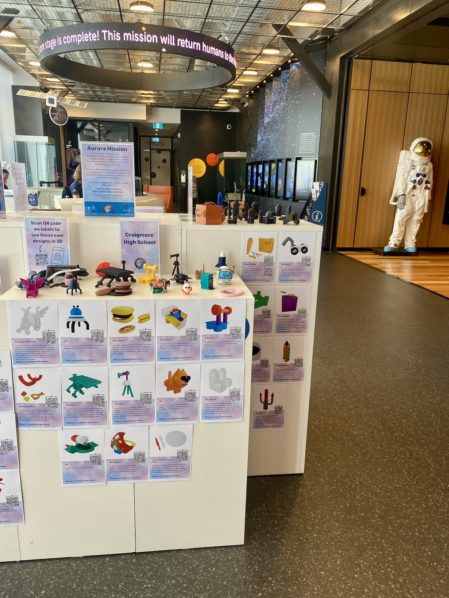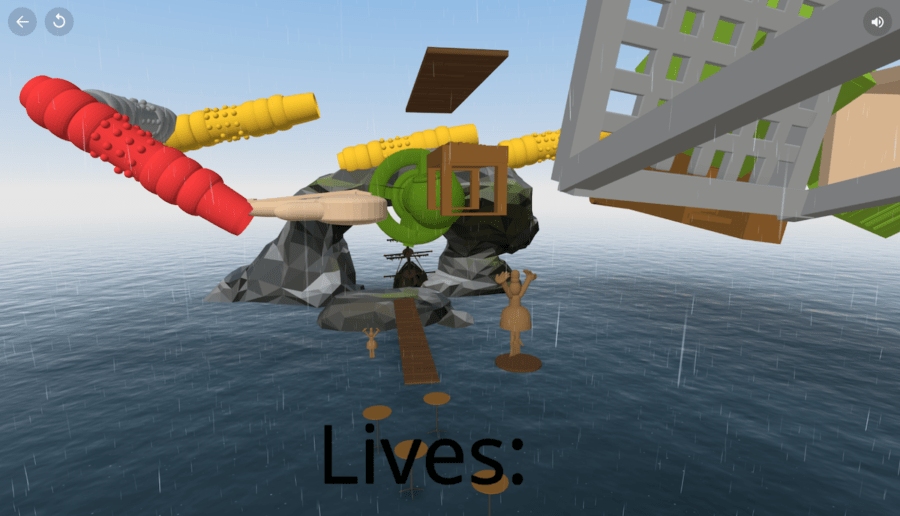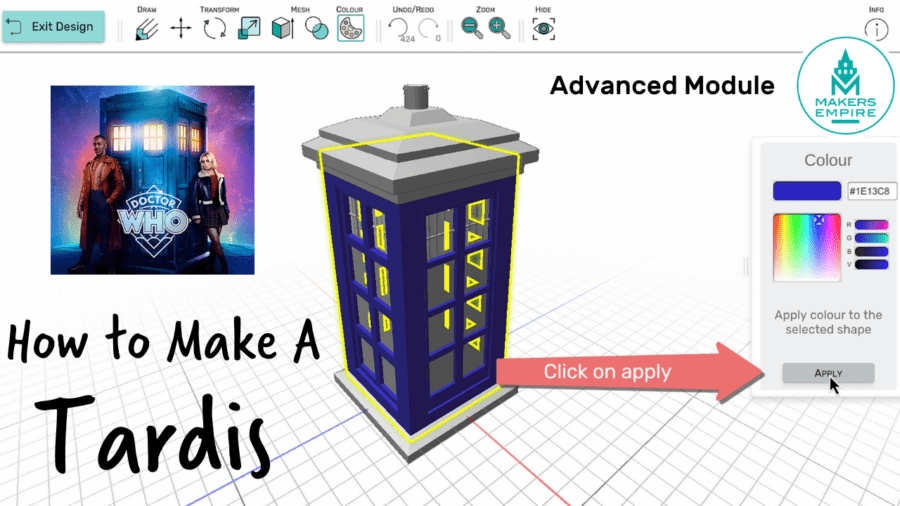In Australia, primary children celebrate Book Week each year by dressing up in costume and participating in a variety of activities. It’s one of only a few days of the year that children can attend school dressed in costume so many children and parents love getting really creative.
Over the years, my son, known as BOTW in Makers Empire, has gone to Book Week as Superman, Harry Potter, Batman, Iron Man, and Iron Patriot. Each year, I bought an official costume and he happily wore it to Book Week.
Last year, he wanted to go as The Mandalorian from the fantastic Star Wars TV series we’d been watching. Now finding a good Mandalorian costume wasn’t as easy. The Mandalorian outfit in the TV series was just so cool looking that the costumes for kids we found online didn’t quite measure up.
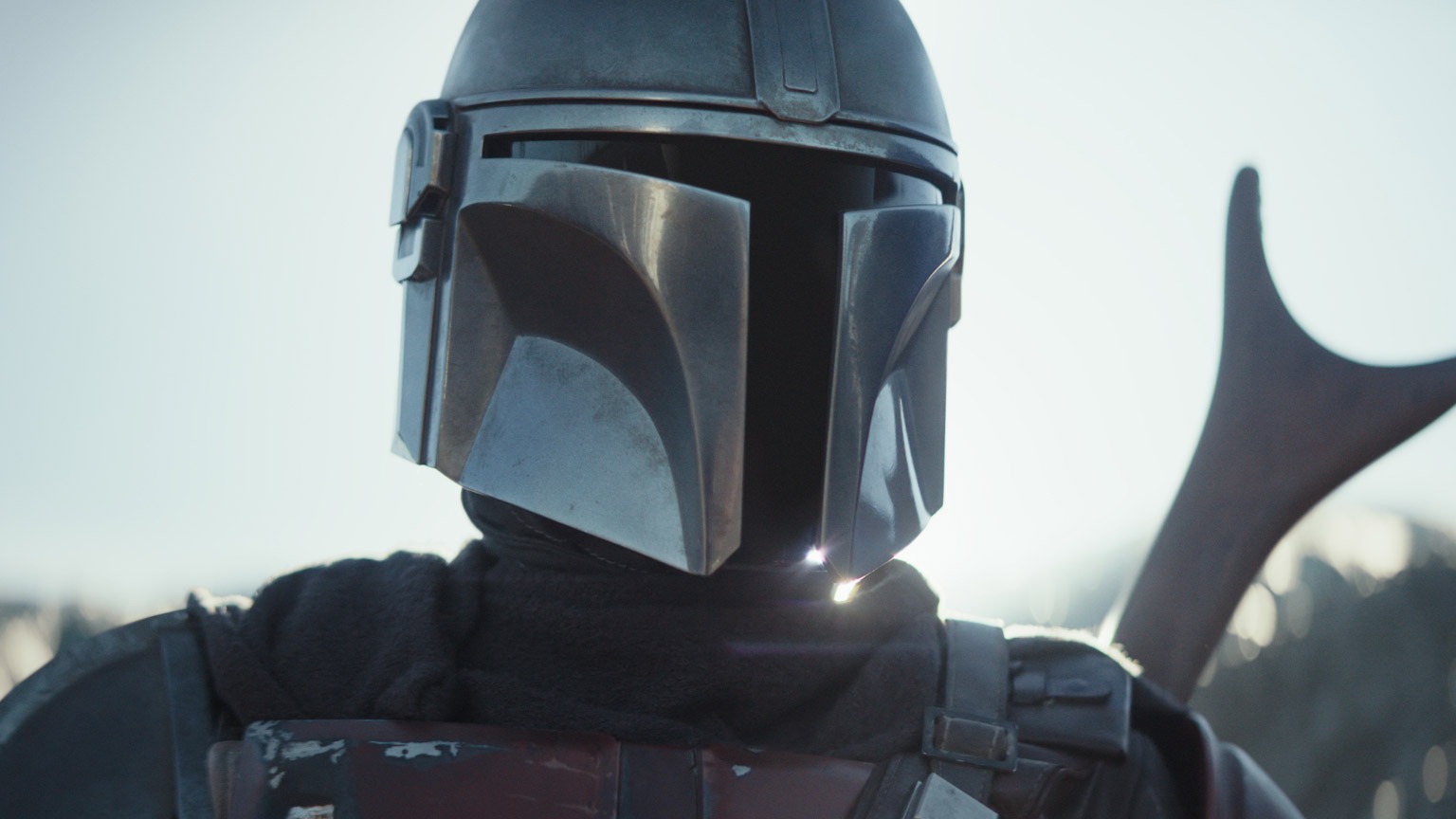
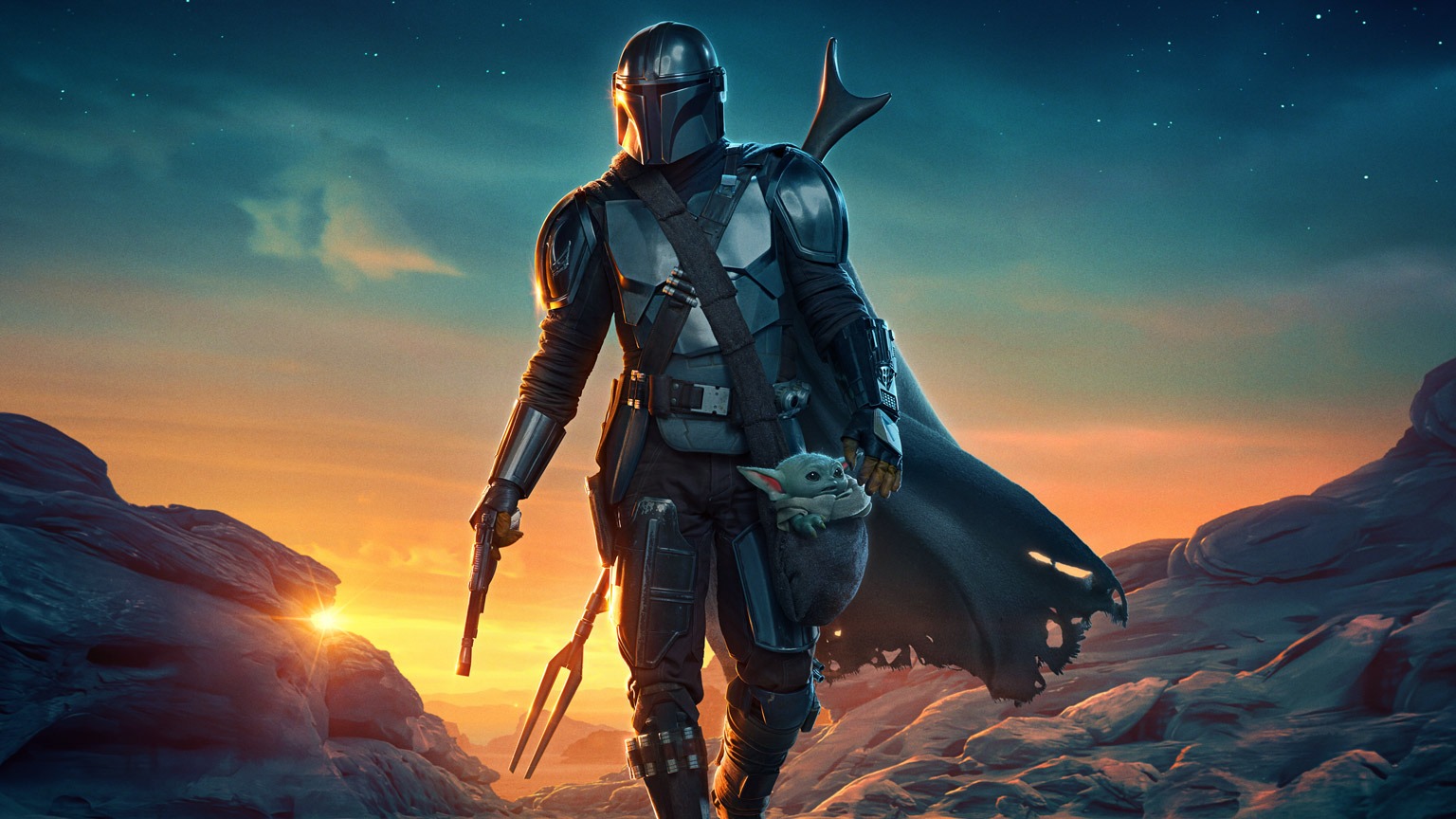
Also, in the meantime, both BOTW and his dad had gotten into 3D printing: BOTW was using Makers Empire at school to study Design and Technology and learn about real-world problem solving while his dad was using a 3D printer at home to make custom models and art pieces. BOTW had also created a number of Mandalorian costumes like these two below using Makers Empire’s 3D design software.
After some discussion, BOTW’s dad decided to try to make his son’s costume at home using 3D printing and materials from the local hardware and craft stores. Watch the video of BOTW explaining the process:
As you can see, he was thrilled with how well it turned out!
Now the video above summaries a huge amount of work that went into making the costume so we spoke with BOTW’s dad to learn more about making a kid-sized Mandalorian costume from scratch.
Making a Mandalorian Costume for Book Week
How would you describe your experience with making things?
“I’ve been making stuff ever since I was a kid but I didn’t get into making costumes until I was teaching in Japan and we would make costumes for events at school: I made a Ghostbusters costume and an anime costume.
“I’ve always enjoyed making things out of polystyrene foam as it’s so easy to shape but the 3D printer gives you the option to make durable objects that are more precise. I remember seeing STL files for mechs (big robots) online and that’s when I borrowed a 3D printer to see what it was like.
“A lot of the stuff I initially printed were mini models for Dungeons and Dragons (below left) or models for dioramas. I just printed out ready-made designs that I found and then painted them. I also printed out a baby Yoga/Grogu with heart using a pre-made design from Thingiverse (below right).”
How did you make the 3D printed Mandalorian helmet?
“I thought about using 3D design software to make my own parts but there are heaps of 3D designs already out there. Plus, my heart lies more in the making than the designing. You could definitely try to design your own helmet though – it would be a really fun challenge.
“So I looked on Youtube to see if I could find someone who had already 3D printed a Mandalorian helmet and three different people recommended this Nikko Industries helmet. So I bought the STL file (about $30). I started with a child-sized helmet by scaling down the original design but the print failed. I was using the Crealty CR10 3D printer and it didn’t have a resume function or a low filament sensor so if the print failed mid-print it just failed. So that was quite frustrating.
“However, it turned out OK as I then realised it would make sense to make an adult-sized one so he could continue wearing it. So I printed the helmet again at full size. It was a four-day print in the end – the longest I’ve ever done — and I used about 1.5Kgs filament.
“Next, I looked on Youtube for tutorials re weathering Cosplay helmets and armour and applied similar techniques that I’d used on miniatures to paint and weather the helmet. So after printing the helmet I did the following:
- Removed the support material;
- Sanded the helmet with sandpaper to remove some of the layer lines;
- Sprayed the helmet with automotive putty spray primer to fill in some of the layer lines;
- Spray painted the helmet acrylic metallic silver;
- Weathered and distressed the helmet using watered down brown and back paint and a sponge using the techniques described in the video linked above;
- Gave the helmet a few coats of clear varnish to preserve and protect it;
- Stuck on carved, low allergenic foam padding inside to make it comfortable to wear; and
- Added black mesh to the front for good visibility as well as a black panel.”
How did you make the Mandalorian body armour and cape?
“I made the pauldrons (shoulder guards) first as I wasn’t sure how long it was going to take and thought that if he had only the helmet and pauldroons it would still look cool.
“I watched this Make Your Own Mandalorian Beskar Pauldron video tutorial, which was really helpful, as it demonstrated foam cutting, sculpting and gluing. I then got a beskar pauldron template from Sionacch Studios that already had the Mudhorn emblem on it and printed it out. I then cut those pieces out of EVA foam from the local hardware and craft stores using a Stanley knife. I shaped the pauldrons using a heat gun and then realised this technique could be used to make the rest of the body armour.
“So I found a chest plate image online and printed it out on paper, tested it on him for size and then scaled it down to fit. I then cut it out of foam as before. For his arm guards and shin guards (greaves) , I just drew rough designs on paper, measured it on his arms and thighs to fit him over his clothes and then made them in foam using the same techniques described above.”
“I then researched how to seal EVA foam for printing and found this helpful video tutorial. After sealing the foam as per the tutorial suggestions and letting it dry, I then painted and weathered all of the body armour using similar techniques as described earlier.
“I then measured up the velcro strips against the pieces and BOTW, cut them to the required lengths and attached them to the body armour using a mixture of hot glue and special glue from Bunnings.
“For the cape, I just bought an olive-brown piece of material from the local craft store and distressed it using sandpaper. I then glued velcro strips to it that secured it to the backside of the chest plate.
“The knob from the Razer Crest that Grogu plays with was made from a painted polystyrene ball. I’d previously made the Baby Yoga design using a design from Thingiverse and painted.”
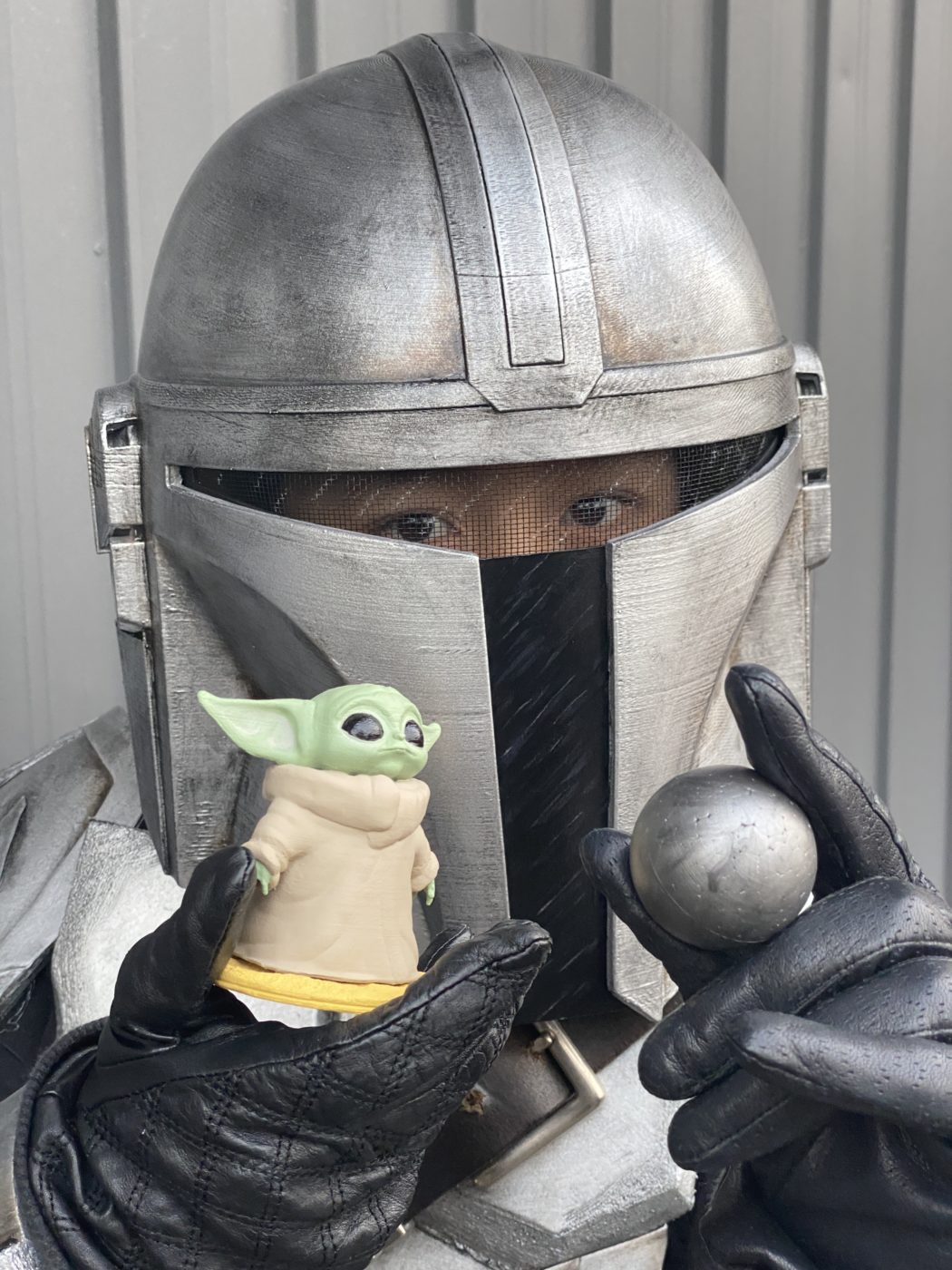
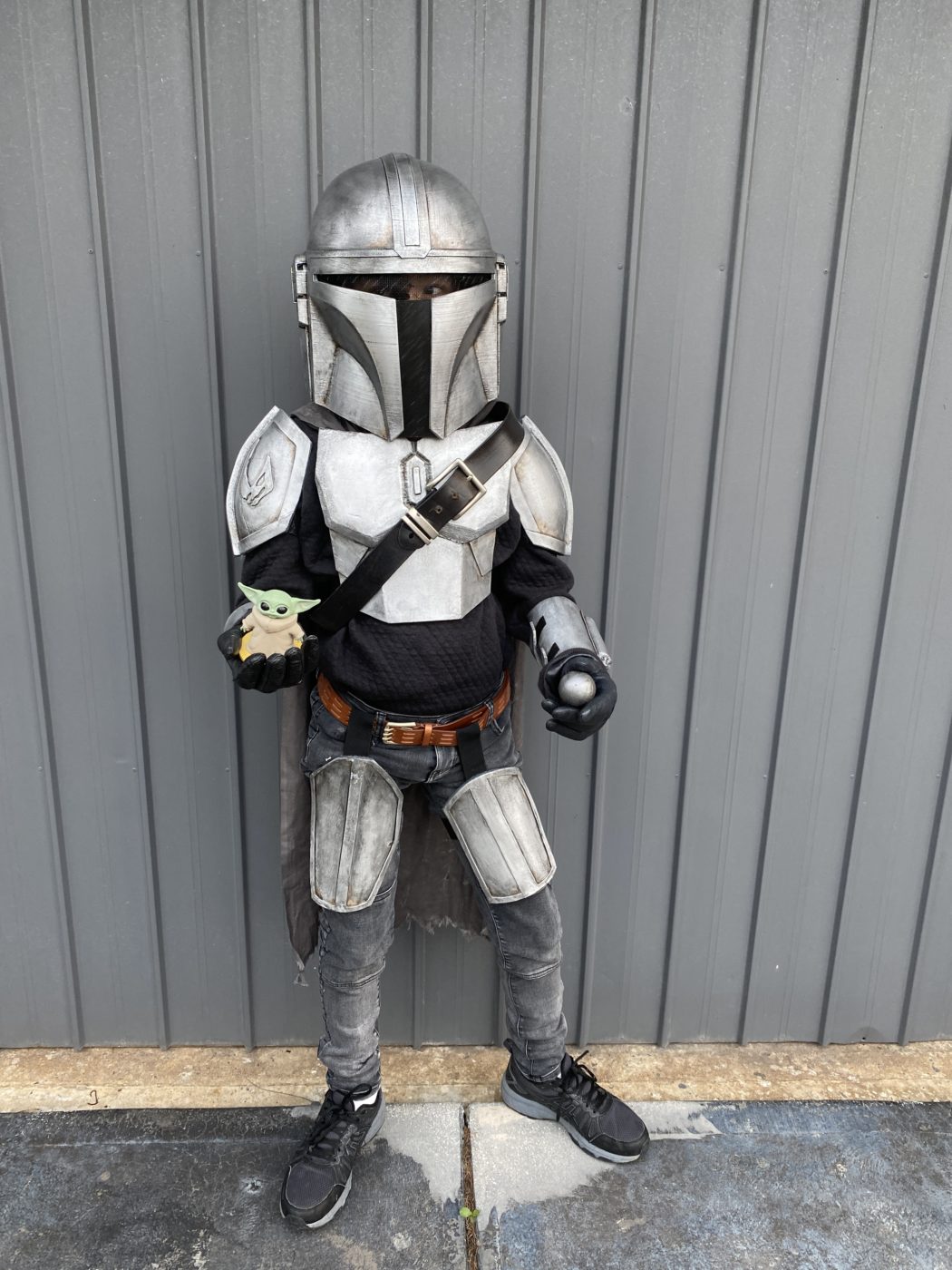
Do you have tips for people wanting to make this costume?
- “Research, design and making the costume was about 20-30 hours total so allow yourself enough time. (You can use the designs he used and follow the suggested tutorials to save yourself research time).
- It took about four full days to 3D print the helmet. I would recommend using a 3D printing service to print the helmet unless you already have access to a 3D printer and have some experience with 3D printing.
- Keep it to your level of experience and allow yourself plenty of time. You don’t have to go all out with this. Even if you just had the 3D printed and painted helmet and wore it with suitable clothes you’d still look pretty cool. People would still know you’re The Mandalorian as the helmet is the iconic, instantly recognisable item.
- Use the materials that are available to you. If it’s a costume for a child make sure you make it out of material that is sturdy and strong and that they have room to move and play in it.
- I found most supplies at my local hardware and craft stores. For more specialised items, the easiest way to find suppliers is to look up people who do live action role play in your area and see which suppliers they recommend.
- You should use appropriate safety gear when handling paint or glue. I used the following gear:
- Nitrile gloves for protection;
- Safety goggles; and
- Respirator when working with foam, paint or glue.”
How did your son react to the finished costume?
“I finished the costume late the night before Book Week and left it to dry. When I got up in the morning — and I got up early to help him with it — he was already standing outside the bedroom door wearing it!
“When I saw him, I thought, “wow, that looks amazing.” I was surprised he managed to get it on by himself though. I was also surprised to see that it all held together so well given that some of the glue had only been applied eight hours earlier (the glue needs 72 hours to set completely).
“The coolest thing was seeing how happy he was. It was enjoyable making it but it was stressful, too. It was really the look on his face when he had it all on that made it so special.”
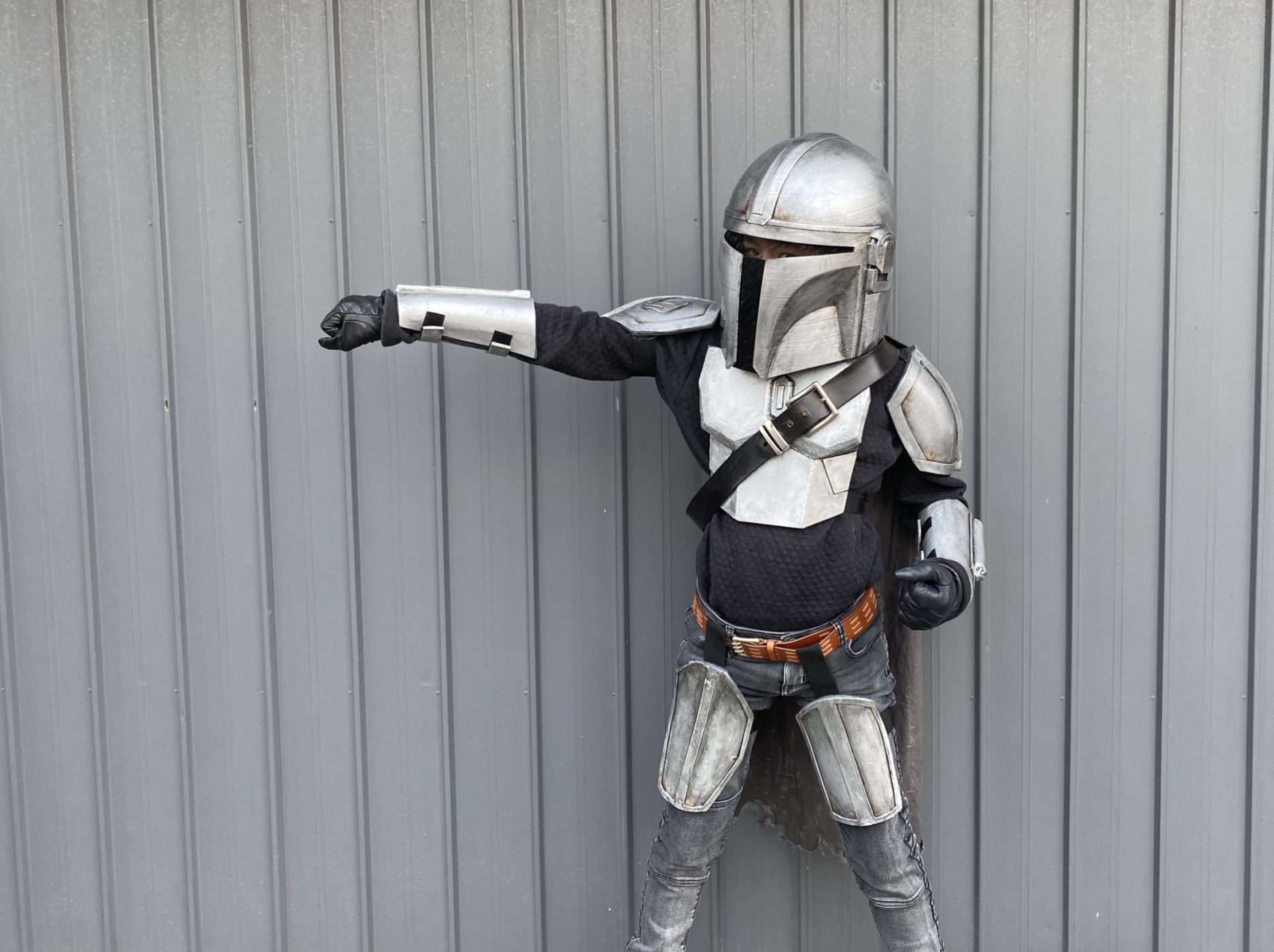
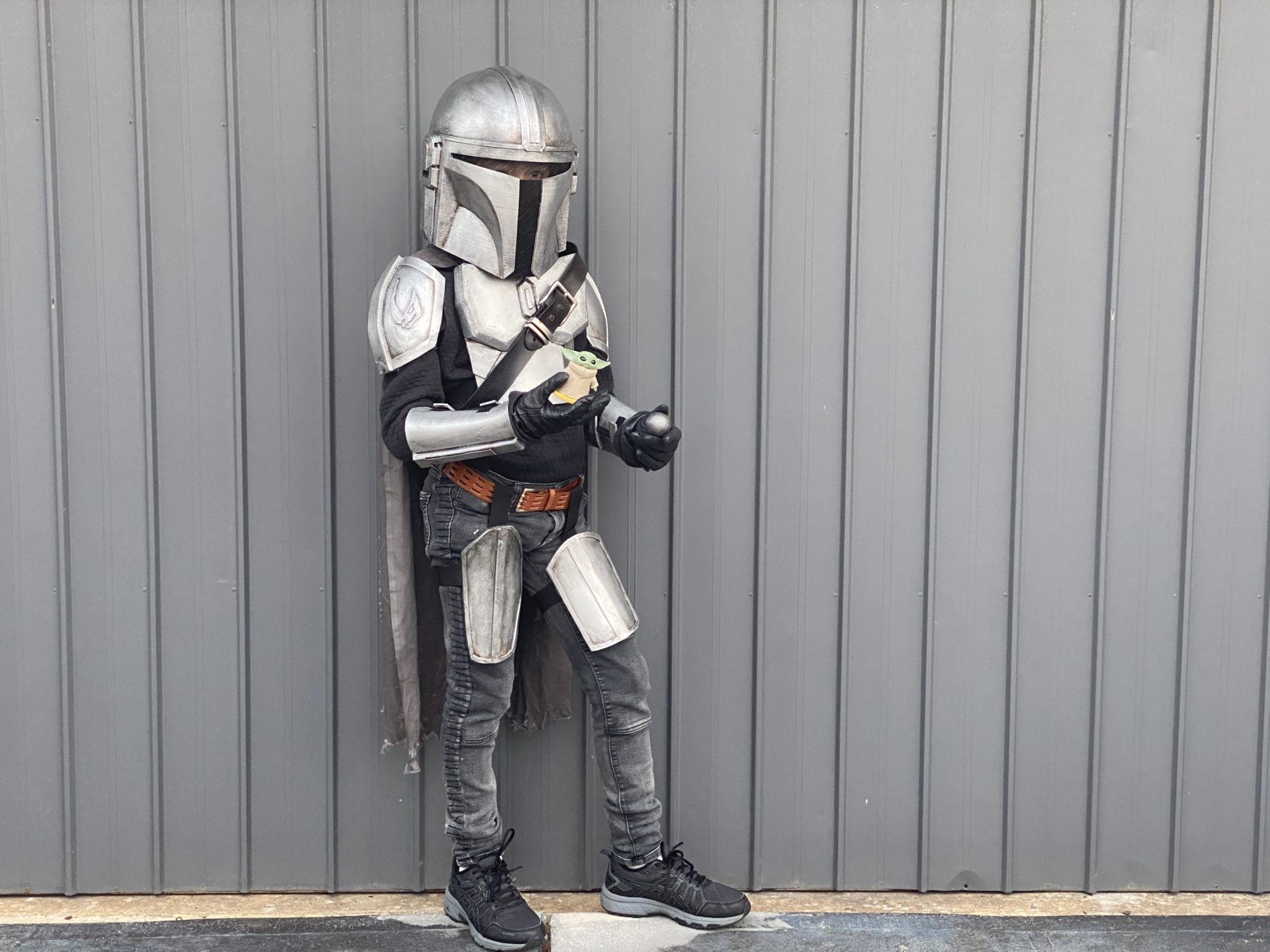

Christina Soong
Christina Soong is Director of Marketing at Makers Empire. Previously, she has held senior marketing and management roles for leading not for profits and arts organisations in Australia, Asia and England. Christina is also an award-winning writer and photographer and has worked as a consultant and content developer. Christina’s blog, The Hungry Australian, won the national Best Australian Blogs 2014 competition.

